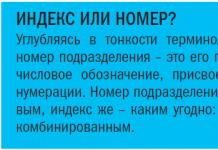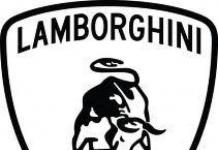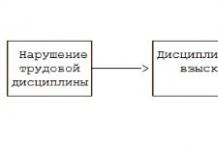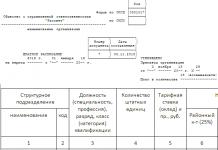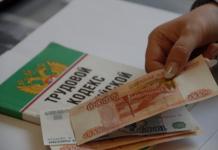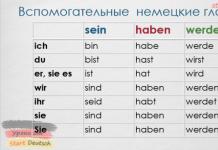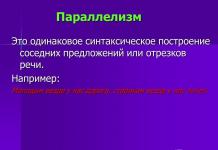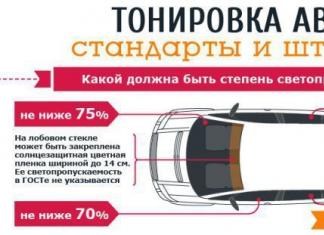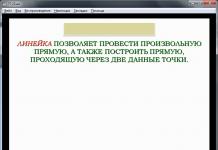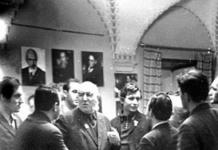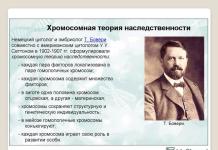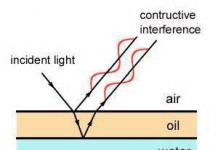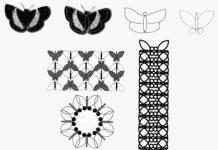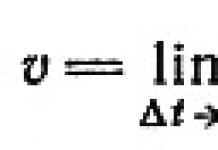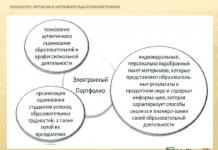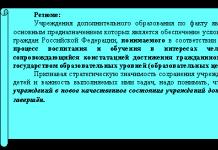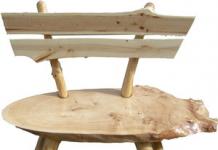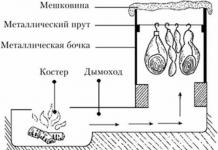Anaphora Anaphora This is the repetition of individual words or turns at the beginning of the passages that make up the statement. For example, (lexical anaphora): The winds did not blow in vain, The thunderstorm did not go in vain. Syntactic constructions of the same type (syntactic anaphora) can be repeated, for example: I am standing at high doors. I follow your work.
Antithesis Antithesis This is a turn in which opposite concepts are sharply contrasted to enhance the expressiveness of speech. For example: Where the table was food, there is a coffin. Often the antithesis is built on antonyms, For example: The rich feast on weekdays, and the poor grieves on holidays.
Non-Union Non-Union A stylistic figure consisting in the intentional omission of connecting unions between members of a sentence or between sentences. The absence of unions gives the statement swiftness, richness of impressions within the overall picture.
For example: Swede, Russian - stabs, cuts, cuts, drumming, clicks, rattle, thunder of cannons, stomp, neigh, groan ... Cf. non-union enumeration of subject names to create the impression of a quick change of pictures: Booths, women, boys, shops, lanterns, palaces, gardens, monasteries, Bukharians, sleighs, vegetable gardens, merchants, shacks, peasants, boulevards, towers, Cossacks, pharmacies, shops flash by fashions, balconies, lions on the gates...
Gradation Gradation This is a stylistic figure, consisting in such an arrangement of words, in which each subsequent one contains an increasing (less often decreasing) meaning, due to which an increase (less often weakening) of the impression produced by it is created. For example: In autumn, the feather grass steppes completely change and get their own special original, unlike anything else.
Inversion Inversion This is the arrangement of the members of a sentence in a special order that violates the usual, so-called direct order, in order to enhance the expressiveness of speech. Please note that not every reverse word order is an inversion: you can talk about it only when stylistic tasks are set using it - increasing the expressiveness of speech. For example: They brought out the horses. I didn't like them.
Polyunion Polyunion A stylistic figure consisting in the deliberate use of repeating unions for logical and intonation underlining the members of a sentence connected by unions, to enhance the expressiveness of speech. For example: A thin rain sown on the forests, and on the fields, and on the wide Dnieper. The same when repeating the union between composed sentences, for example: Houses burned at night, and the wind blew, and black bodies on the gallows swayed from the wind, and they shouted over them crows.

Rhetorical question Rhetorical question This is a stylistic figure, consisting in the fact that the question is not posed in order to get an answer, but to draw the attention of the reader or listener to a particular phenomenon. For example: Do you know the Ukrainian night? Oh, you don't know the Ukrainian night!
Rhetorical appeal This is a stylistic figure, consisting in an underlined appeal to someone or something to enhance the expressiveness of speech. For example: Hush, speakers! Your words, Comrade Mauser. Rhetorical appeals serve not so much to name the addressee of the speech, but to express the attitude towards this or that object, to characterize it, to enhance the expressiveness of the speech.
Silence Silence This is a turn of speech, consisting in the fact that the author deliberately does not fully express the thought, leaving the reader (or listener) to guess what was not said. For example: No, I wanted ... maybe you ... I thought It was time for the baron to die.

Ellipsis Ellipsis This is a stylistic figure, consisting in the omission of any implied member of the sentence. For example: Men - for axes The use of an ellipsis gives dynamism to the statement, the intonation of lively speech, and artistic expressiveness.

Stylistic figures- special turns of speech fixed by stylistics, used to enhance the expressiveness (expressiveness) of the statement. Stylistic figures of speech usually stand completely apart from other artistic and expressive means of the literary language. They are considered separately. They are used to enhance the imagery, expressiveness of speech. Figures of speech are widely used in poetry.
ALLUSION The stylistic figure is a hint ("Glory of Herostratus").
ALOGISM Intentional violation of logical connections in speech for the purpose of stylistic effect (“I will never forget - he was or was not, this evening”).
AMPLIFICATION A stylistic figure consisting in stringing synonymous definitions, comparisons in order to enhance the expressiveness of the statement (“He takes it like a bomb, he takes it like a hedgehog, like a double-edged razor”).
ANADIPLOSIS Repeating the final consonance, word or phrase at the beginning of the next phrase or poetic line (“Oh, spring, without end and without edge, Without end and without edge dream!”).
ANACOLUTHON Syntactic inconsistency of parts of the sentence as an unconscious violation of the language norm or as a conscious stylistic device (“And the animals from the forests come running to see How the ocean will be and whether it will be hot to burn”, “I am ashamed, as an honest officer”).
ANAPHORA Repetition of the initial parts of adjacent segments of speech (“The city is magnificent, the city is poor ...”, “I swear by the odd and even, I swear by the sword and the right battle”).
ANTITHESIS Comparison or opposition of contrasting concepts, positions, images (“I am a king, I am a slave, I am a worm, I am a god!”, “The rich fell in love with the poor, The scientist fell in love with the stupid, The ruddy fell in love with the pale, The good fell in love with the harmful”) .
ANTONOMASIA The use of a proper name to refer to a person endowed with the properties of a well-known bearer of this name (“Don Juan” in the meaning of “love seeker”, “I eluded the Aesculapius (i.e., from the doctor) Thin, shaved, but alive”).
ASYNDETON(asyndeton) construction of a sentence in which homogeneous members or parts of a complex sentence are connected without the help of unions (“I came, I saw, I conquered”).
HYPERBATON A stylistic figure that consists in changing the natural order of words and separating them from each other with inserted words (“Only the languid Muses are delighted”).
HYPERBOLA A kind of trope based on exaggeration ("a sea of vodka").
GRADATION Consistent injection or, conversely, weakening the power of homogeneous expressive means of artistic speech (“I do not regret, I do not call, I do not cry ...”).
IZOKOLON A stylistic figure, which consists in the complete syntactic parallelism of neighboring sentences (“He listens to the whistle with his usual ear, He smears the sheet with one spirit”).
INVERSION Changing the usual order of words and phrases that make up a sentence (see hyperbaton and chiasm.
IRONY A stylistic device of contrasting the visible and hidden meaning of the statement, creating the effect of mockery.
CATAHRESIS A semantically unjustified combination of words, erroneous or intentional, ("hot broom" as a combination of two expressions: "hot iron" and "new broom").
LITOTES Trope opposite to hyperbole; deliberate understatement ("man with a fingernail").
METAPHOR The transfer of the properties of one object or phenomenon to another on the basis of a feature that is common or similar for both compared members (“talk of waves”, “bronze of muscles”).
METONYMY Replacing one word with another based on the relationship of their meanings by adjacency (“the theater applauded” instead of “the audience applauded”, or “eat the plate” instead of “eat the contents of the plate”).
POLYUNION(polysyndeton) Such a construction of a sentence, when all (or almost all) homogeneous members are interconnected by the same union (“and a sling, and an arrow, and a crafty dagger”).
OXYMORON(oxymoron) A combination of words opposite in meaning ("living corpse", "heat of cold numbers").
PARALLELISM Identical or similar arrangement of speech elements in adjacent parts of the text, which, when correlated, create a single poetic image. (“The waves are splashing in the blue sea. The stars are shining in the blue sky”).
PARONOMASIA(paronomasia) A stylistic figure based on the use of paronyms (“Forests are bald, Forests are defoxed, Forests are defoxed”, “he is not deaf, but stupid”).
PARCELLATION The syntactic device of the written literary language: the sentence is divided into independent segments, graphically highlighted as independent sentences ("And again. Gulliver. Standing. Stooping").
PLEONASM A stylistic device that reinforces the meaning of what was said (“sadness-longing”, “bitter grief”, “But without fear, without fear, Shingebis went to battle”
SIMPLOCA The figure of repetition: initial and final words in adjacent verses or phrases with different middles or middles with different beginnings and ends (“In the field, a birch tree stood, In the field, curly stood,” “And I sit, full of sadness, I sit alone on the shore”).
SYNECDOCHE A type of metonymy, the name of a part (smaller) instead of the whole (larger) or vice versa (“my little head disappeared” instead of “I’m gone”, “hearth” instead of “house”, “tool” - to refer to a specific ax, hammer, etc. ).
SOLECISM An incorrect turn of phrase that does not violate the meaning of the statement (“What time is it?”).
chiasm Type of parallelism: the arrangement of parts of two parallel terms in reverse order ("We eat to live, not live to eat").
ECLECTICISM Mechanical connection of heterogeneous, often opposite style elements (“Well said, nothing to add”).
ELLIPSE The omission of a structurally necessary element of the statement, which is usually easily restored in a given context or situation (“It wasn’t there [it was]. The sea is not on fire”).
EPITHET An ornament, a figurative definition that gives an additional artistic characteristic of an object (phenomenon) in the form of a hidden comparison (“clear field”, “lonely sail”).
EPIPHORA Opposite of anaphora: repetition of the final parts of adjacent segments of speech. Type of epiphora - rhyme ("Dear friend, and in this quiet house Fever beats me. I can not find a place in a quiet house Near a peaceful fire!").
EUPHEMISM Mitigation (words like "damn" instead of "bl%d").
Antithesis(see tropes) is a syntactic figure if parts of a sentence are contrasted, and not individual words (antonyms) (No Parisian toilets - a stern sweater and a long gray skirt tied with a wide belt(about M. Tsvetaeva)).
Anaphora- repetition of identical words or consonances at the beginning of a poetic line or prose phrase, for example: I look for the future with fear, // I look to the past with longing(M. Yu. Lermontov).
Asyndeton- deliberate omission of coordinating conjunctions to give the phrase more dynamics. For instance: Booths, women, Boys, shops, lanterns, Palaces, gardens, monasteries, Bukharians, sleighs, vegetable gardens, Merchants, shacks, peasants, Boulevards, towers, Cossacks, Pharmacies; fashion stores, balconies, lions on the gates...(A. S. Pushkin).
Introductory words and phrases- a word, combination of words or sentences not related to other words; can express the feelings of the writer (joy, regret, surprise, etc.) in connection with the message: fortunately, fortunately, unfortunately, unfortunately and etc.; also express the speaker's assessment of the degree of reality of what is being reported (confidence, assumption, possibility, uncertainty, etc.): of course, of course, it seems, of course, of course, apparently and etc.; indicate the connection of thoughts, the sequence of presentation and the source of the reported: consequently, in particular, for example, in addition, therefore, first of all and etc.; in my opinion ..., in my opinion ..., they say, I remember, they say, they say and etc.; represent an appeal to the interlocutor or reader in order to draw his attention to what is being reported, to inspire a certain attitude to the facts presented: you see, understand, imagine, please, suppose, suppose and etc.; show the degree of commonness of what is being said (it happens, happens, usually etc.), to express the expressiveness of the statement (in fairness, in conscience, it's funny to say etc.) For example: “Watch your comrades during a dispute, discussion, polemic - you will, of course, make sure that they behave differently”(L. Pavlova).
Question-answer move (hypophora)- this is a segment of monologue speech that combines a rhetorical question (or a series of questions) and an answer to them; a question of thought. The question-answer move consists in the fact that the speaker, as if anticipating the objections of the listeners, guessing their possible questions, formulates such questions himself, answers them himself. This technique involves the addressee in a dialogue, makes a participant in the search for truth. It is also used as an effective means in hidden controversy. Example: Tens of thousands of soldiers disappeared without a trace, not a shred of flesh was left of them, they really disappeared without a trace. They cannot be buried! And what? Do not consider a single war in history over? Isn't it easier to assume: you didn't understand what Suvorov said!
gradation- a turn of poetic speech, consisting in a deliberate grouping of homogeneous members of a sentence in a sequential order of increasing or decreasing semantic or emotional significance; a means that allows you to recreate events and actions, thoughts and feelings in the process, in development (from small to large - direct gradation - or from large to small - reverse gradation.), to convey the growing tension of feelings, experiences. For instance: “Fu, the abyss, what a mess! .. It is impossible to describe: velvet! silver! the fire!"(N. V. Gogol); I called you, but you did not look back, I shed tears, but you did not descend(A. Blok). Gradation can become a compositional device for constructing the entire text (for example, in the fairy tales "Terem-Teremok", "Gingerbread Man", "About Dedka and Turnip").
Inversion- violation of the sequence of speech, the generally accepted word order, rearrangement of parts of the phrase; gives the phrase a new expressive shade, a special solemnity to the sound and meaning of the sentence: The aching spirit heals the hymn(E. Baratynsky).
polyunion- intentional repetition of identical unions. For instance: And the heart beats in ecstasy, And for him resurrected again And the deity, and inspiration, And life, and tears, and love(A. S. Pushkin).
Parallelism- comparison of natural phenomena and human life. For instance: Grass overgrows graves - pain overgrows with prescription(M. Sholokhov).
Parceling- a stylistic device for using incomplete sentences (sentences that lack one or more members The forest bird has already flown away. The swamp followed her.); breaking down a whole sentence into separate parts (Maybe our hero became a millionaire. Or an artist. Or just a fun beggar) enhances their semantic weight, gives speech a special emotionality.
subtext- unspoken directly in the text, but as if arising from individual remarks, remarks, details, etc., the attitude of the author to the material presented. In a scientific style or in business papers, subtext would be a disadvantage that interferes with the perception of the objective content of the text, but in a work of art or journalism it is an integral part.
A rhetorical question- a question addressed to the reader that does not require an answer; used to attract, enhance reader attention; enhances the emotion of the speech. The same role is played appeals, exclamations. For instance: Why don't people fly? I say why don't people fly like birds?(A. N. Ostrovsky "Thunderstorm"); “What lofty prose this is! And so many times they will quote it!”(I. Andronikov). Rhetorical address differs from the usual address in that it names the inanimate object that is being addressed: Greetings, desert corner,… (A. S. Pushkin).
Syntactic constructions of colloquial style - constructions used primarily in colloquial speech, which is characterized by the use of simple and incomplete sentences. The constructions of colloquial speech are compressed, capacious, concise. Violation of style grabs the reader's attention. Short, jerky sentences, omission of individual words give speech dynamism, ease, looseness, create the effect of "impromptu", unpreparedness, a feeling of direct communication, dialogue. The use of interrogative sentences, typical for oral speech, enlivens, facilitates the perception of the material by the reader, serves to polemically sharpen the proposed problems. For instance: “Incorporation is the transfer of the workshop into the ownership of the collective. Reaction? No! The workshop and so, in fact, was the property of the workers. Another option. Privatization in one hand. The main question is what? To shadow structures or to one of the workers?
Syntax parallelism- homogeneous syntactic construction of sentences. For instance: "Your mind is deep, that the sea// Your spirit is high that mountains.“The stars are shining in the blue sky, The waves are splashing in the blue sea, A cloud is moving across the sky, A barrel is floating on the sea” ( A.S. Pushkin); Diamond is polished by diamond, // The line is dictated by the line(S. Podelkov).
Default- a figure of speech in which the statement is deliberately not completed so that the reader himself thinks out the missing words, and can also be a means of expressing a special emotional state. An ellipsis is often used as a default. For instance: Here he will get to you ... Oh, if not for these relatives! ..
Ellipse- a speech construction in which a word or several words are omitted, easily restored either from the context, or according to a specific situation, or due to the communicative experience of the speakers. Helps to enhance the emotional richness of the statement, giving it conciseness. For instance: “Here, it’s true, a little man [is walking], two women [are] following him ...”(A. S. Pushkin).
Epiphora- stylistic figure of repetition; repetition at the end of a segment of speech of the same word (lexical epiphora), word form (grammatical epiphora) or synonymous word (semantic epiphora) Example: “Scallops, all scallops: scallop cape, scalloped sleeves, scalloped epaulettes, scallops below, scallops everywhere”(N.V. Gogol).
1.3 MORPHEMICS. WORD FORMATION (task B1 of the USE test)
Morphemics- a branch of linguistics that studies the system of morphemes of a language and the morphemic structure of words and their forms. Morpheme- it minimal significant part of a word (root, prefix, suffix, ending).
word formation- a section of linguistics that studies the formal semantic derivative of the words of a language, means and methods of word formation.
Antithesis (from the Greek. antithesis) is a figure based on a sharp opposition of images and concepts (“thick and thin”, “ice and fire”).
Oxymoron(oxymoron) acute-stupid - a combination of words opposite in meaning ("A living corpse", "it's fun to be sad ... smartly naked").
gradation(gradatio - gradual elevation) the arrangement of words that are close in meaning as their emotional meaning grows ("I do not regret, I do not call, I do not cry").
Parallelism(parallelos - walking side by side) - a figure that is a homogeneous syntactic construction of a sentence or its parts.
Chiasmus- reverse parallelism ("There was love without joy - separation will be without sadness").
Anaphora(anaphora) - monophony ("I swear by the first day of creation, / I swear by its last day").
Epiphora(epiphora) - repetition of words or expressions at the end of syntactic turns .
Ring - repetition of words or phrases at the beginning and end (“Shagane you are mine, Shagane!”) stanzas, poems.
Composite joint. A line or sentence ends with a word or phrase that repeats at the beginning of the previous line.
Refrain - periodically repeating a word or expression.
Anacoluthon(anakoluthos - incorrect, inconsistent) - syntactic inconsistency of parts or members of a sentence (as negligence or means of expression). Example: “The Neva all night / Rushed to the sea against the storm, / Not having overcome their violent dope” (instead of “her”).
Ellipsis(Greek elleipsis - omission, loss), the main variety of figures of decrease, omission in the phrase of the implied word. Depending on the content, it creates the effect of everyday negligence, wise laconicism, "telegraphic" efficiency, lyrical excitement, colloquial speech. (“They brought in and - a glass - a knock to him! / And don’t breathe to the bottom! / Walk at the wedding, because - / She’s the last one ... "».
Inversion(from Latin inversion - turning over), a figure of a word: a violation of the direct order of words (“And the guests are not reassured by the death of this alien land”).
Default, turn of speech associated with the fact that the author deliberately does not fully express his thought.
A rhetorical question(“Why are you bending over the waters, / Willow, your crown?”).
Rhetorical address(“Look how the grove is turning green, / Doused with the scorching sun”).
Rhetorical exclamation(“What a night! How clean the air is. / How a silver leaf slumbers!”)
In artistic speech, verbal constructions may deviate from the norm and the syntax may be deformed.
trails
Antiphrasis(Greek antiphrasis), the use of the word in the opposite sense: "this Croesus" about a beggar; “Where, smart, are you wandering, head?” (I. Krylov) - about a donkey. A. is the most common form of irony as a trope.
Antonomasia(Greek antonomasia, from antonomazo - I call it differently), a trope referring to the name of a person, a kind of synecdoche ("Galilean" instead of Jesus - a clan instead of a person, "Mentor" instead of a mentor - a person instead of a clan) or periphrase ("earth shaker " instead of Poseidon).
Asteism(in Greek asteismos - wit, joke, literally capitalism) a kind of irony as a path: praise (usually to oneself) in the form of reprimand: "I, a simple person." In the broad sense of the word, any elegant joke.
Gendiadis(from the Greek hen dia dyoin - one through two), the figure of the word: the use of nouns instead of a noun and an adjective. Rome is strong in courage and men (instead of brave men). Rare in Russian; close to gendiadis are turns like “longing for the road, iron” (A. Blok) instead of railway.
Hyperbole ( from the Greek hyperbole - exaggeration), a stylistic figure or artistic device based on the exaggeration of certain properties of the depicted object or phenomenon. Hyperbole is an artistic convention: it is introduced into the artistic fabric of the work for greater expressiveness, it is typical for the poetics of epic folklore, for the poetry of romanticism and the genre of satire (N.V. Gogol, M.E. Saltykov-Shchedrin). The stylistic figure opposite to hyperbole is the litote.
Litota ( from the Greek litotes - simplicity) 1) trope, close to emphasis and irony, strengthening the meaning of the word by double negation ("notorious" instead of "notorious"); 2) a trope, the reverse of hyperbole (a more correct name is meiosis), an underestimation of the attribute of an object (“a man with a fingernail”).
Metaphor(Greek metaphora), a type of path, transferring the properties of one object (phenomenon or aspect of being) to another on the basis of their similarity in some respect or in contrast. Metaphor is a hidden comparison. Of all the tropes, metaphor is the most expressive. Possessing unlimited possibilities in bringing together a variety of objects and phenomena, essentially rethinking the subject in a new way, metaphor is able to reveal, expose its inner nature, often metaphor as a kind of micromodel is an expression of the individual author's vision of the world. "My poems! Living witnesses / For the world of shed tears "N.A. Nekrasov, "The universe is only passion discharges" B. Pasternak. Expanded metaphors (spread over several periods or cover the entire poem - "The Cart of Life" by A.S. Pushkin). Realized metaphors (a metaphorical expression is taken in the literal sense and its further literal deployment takes place).
Metonymy(Greek metonymia - lit. renaming), a type of trail based on the principle of adjacency. Like a metaphor, it follows from the ability of the word to a kind of doubling in the speech of the nominative (denoting) function, it is an imposition of its direct meaning on the figurative meaning of the word.
Phenomena brought into connection by means of metonymy can relate to each other as a whole and a part (synecdoche: “Hey, beard! How can I get to Plyushkin?” - N.V. Gogol), thing and material (“It’s not on silver, - ate on gold "- A.S. Griboyedov), content and containing ("Flooded stove cracks" - A.S. Pushkin), the bearer of property and property ("Courage takes the city"), creation and creator ("Man ... Belinsky and Gogol will be carried from the bazaar ”- N.A. Nekrasov).
Personification, prosopopoeia ( from the Greek prosopon - face and poieo - I do), a special kind of metaphor, the transfer of human features (more broadly - the features of a living being) to inanimate objects and phenomena.
paraphrase(from the Greek. periphrasis - a roundabout turn), a trope that descriptively expresses one concept with the help of several: from the simplest cases ("sank into a dream" instead of "fell asleep") to the most complex ("from a long mustache powdered by that implacable hairdresser who without a call, it appears to both the beauty and the ugly and forcibly powders the entire human race for several thousand years ”N.V. Gogol). Characteristic of the baroque era, romanticism. Particular cases of paraphrase are euphemism, litote.
Epithet(from Greek epitheton, lit. - attached), one of the tropes, a figurative definition of an object (phenomenon), expressed mainly by an adjective, but also by an adverb, a noun, a numeral, a verb. Unlike the usual logical definition, which singles out a given object from many (“quiet ringing”), the epithet either highlights one of its properties in the object (“proud horse”), or, as a metaphorical epithet, transfers the properties of another object to it (“ living track).
Purpose: to show the role of stylistic figures in artistic style texts;
To form the skills of a culture of speech; to develop the ability to work with typical tasks of the exam; improve the ability to distinguish between tropes and figures of speech; cultivate interest in the language.
Download:
Preview:
Topic: Stylistic figures based on the possibilities of Russian syntax.
Target: show the role of stylistic figures in artistic style texts;
To form the skills of a culture of speech; to develop the ability to work with typical tasks of the exam; improve the ability to distinguish between tropes and figures of speech; cultivate interest in the language.
Lesson type : lesson of new knowledge.
Repetition : tropes and their use in the text.
Equipment means: slides, tests, cards.
During the classes .
- Organizing time. Recording the topic of the lesson.
introduction :
Each language is beautiful in its own way. But the Russian language is especially dear. What is the wealth, beauty, strength, expressiveness of the language?!
(the answer to this question can be the words of K Paustovsky ...., which we will take as an epigraph to the lesson (write down)
Every word contains an abyss of images.
K. Paustovsky.
Question: What do you think we are going to talk about today?
Determine the purpose of the lesson.
teacher's word : the purpose of our lesson is to analyze the figurative and expressive means of the Russian language, we will talk about stylistic figures based on the possibilities of Russian syntax. To do this, let's remember what refers to the figurative and expressive means of the language.
Exercise: List the trails you know, give 1-2 examples each.
11. Repetition and deepening of previously studied material.
2 students at the blackboard work on cards
Writing in a notebook and assignment: determine the means of expressiveness of the language (write next)
1. Funeral Mozart sounded under the vaults of the cathedral. (Metonymy)
(renaming based on adjacency of phenomena)
2. Black tailcoats were worn apart and in heaps here and there. (Metonymy)
3. Black gold has risen in price. (Paraphrase)
(descriptive expression used instead of a word)
4. Soon there will be “blue gold” in Kosh-Agach (paraphrase)
5. Mother of Russian cities (Kiev) - paraphrase
6. I ate three plates. (Metonymy)
7. Argentina - Jamaica (5: 0) - synecdoche (transfer from part to whole and from whole to part)
8. Priest of Themis (paraphrase) lawyer
9. One tear dripped, then another drop intensified, and suddenly from her eyes
rain poured down. (gradation) the arrangement of words in ascending or descending order)
10. I am two steps away from the school named after V.I. Chaptynov - a litote-understatement.
(mutual check)
Answers are checked in a chain: (answers are recorded in a table)
Conclusion : What is a paraphrase? What is metonymy? What is a synecdoche?
3.Task : what is the means of expressive language?
A) This tool creates a sharp opposition of images, concepts, serves to indicate the contrast? (ANTITHESIS)
B) The same syntactic construction of adjacent sentences or segments of speech is called (syn parallel)
C) This is the repetition of individual words or turns at the beginning of the passages that make up the statement (ANAPHORA)
D) This is a technique from oratory, which organizes a dialogue with the reader, makes you think (RITORIC QUESTION)
Question: What are these language expressions used for?
(give a reasoned answer)
111, Learning new material.
Our today's topic is related to stylistic figures, So, name the stylistic figures of speech known in Russian.
SLIDE
(slide student comes out and reads definitions with examples)
So, the arsenal of figurative and expressive means of the language, as we could see, is exceptionally rich and varied. Here are both paths and stylistic figures designed to decorate speech, to make it accurate, clear, and expressive. Here is the entire Russian lexicon, which contains, conceals innumerable treasures and values.
What is the relevance of this topic for us?
(correctly we need to know, since a number of tasks are related to this topic
HANDOUT FOR AND WORK
U..PERFORMANCE OF TYPICAL TASKS OF THE USE
(independent work)
Option 1 - 1 test (answers: 4,8,5, 1); Option 2 - 2 (answers: 4,8,9,2)
Works will be checked
Remember how the answer form is filled out: ANSWERS ARE WRITTEN ON THE ANSWER FORM.
Teacher's word: The figurative and expressive possibilities of syntax includerows of homogeneous members, and sentences with introductory words, appeals, isolated members, as well as part
elation, non-union, and multi-union.
Examples:
1. A thin rain was sown on the forests, and on the fields, and on the wide Dnieper (multi-union)
2. Swede, Russian-tunic, cuts, cuts, drum beat, clicks, rattle, thunder of cannons, stomping, neighing, groaning ... (non-union)
3. Passionately devoted to the master, he, however, on a rare day in something does not lie to him. (inv.sr.)
U1. Summing up the lesson.
What did you learn in class?




